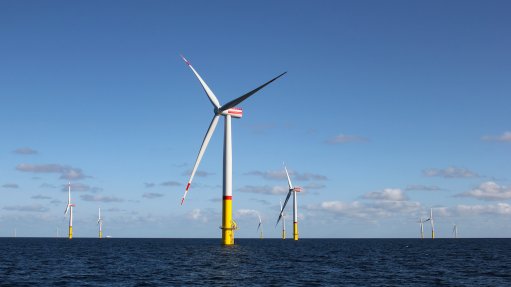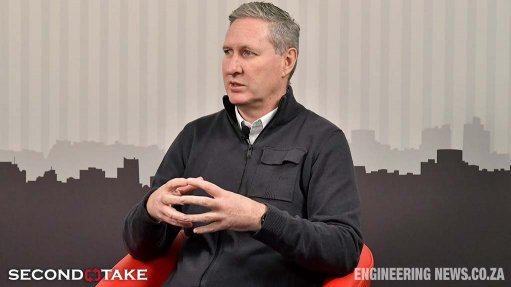Opinion: Government must come to the party on new-energy vehicles
The automotive sector requires policy certainty and investment incentives to meet the challenges of the future and sustain its vital role in the economy, writes National Manager for Manufacturing at Nedbank Commercial Banking Amith Singh.
The importance of the automotive industry cannot be overstated. According to naamsa | The Automotive Business Council, it is responsible for more than 20% of the country’s manufacturing output and 5% of GDP, its products comprise 12.4% of exports and estimates of its multiplier effect suggest it supports up to 450 000 jobs.
That’s why the revolution in vehicle manufacturing worldwide, as internal combustion engines give way to new-energy vehicles, is not only critically important to the local economy but also a massive risk. Bear in mind that the European Union, the biggest market for exported South African vehicles, has said in its efforts to combat climate change it will stop importing internal combustion engines in 2030 and ban the sale of new fossil fuel-powered cars by 2035.
The Electric Vehicles (EVs) White Paper published in December 2023 by the Department of Trade, Industry and Competition – the first policy to comprehensively address this risk – correctly says that to protect and sustain itself the industry must pivot towards the manufacture of electric vehicles (EVs) and EV components. The White Paper’s proposals include increased investment in EV assembly and manufacturing and tax incentives.
In his February Budget, Finance Minister Enoch Godongwana sent a supportive signal when he said that from March 2026, coinciding with the expected start of EV production in South Africa, businesses will be able to claim a tax deduction of 150% of qualifying investment spending in the first year. But the industry has made clear that more detail is needed before celebrations can begin.
The White Paper also observes that “Southern Africa is endowed with considerable mineral wealth necessary for the global green transition; both to produce EV components and other energy sources necessary for the green industrial revolution. The White Paper thus seeks to establish a framework under which African countries work with partner countries to develop the industrial capacity necessary to make the continent a key industrial player, rather than just a source of critical minerals, in the transition to EVs.”
South Africa mines most of the minerals required for EV battery production, meaning it is well placed to lead the regional charge on beneficiation. Through the transforming automotive industry, therefore, we have the opportunity to reinvigorate our mining industry and create employment by scaling up our battery production capabilities.
It is also important to point out that whether vehicles are powered by electricity or fossil fuels, about 60% of their components – everything from windows and body panels to seats and carpets – remain the same. But a key difference in EVs is the absence of a catalytic converter, and this is a risk for South Africa because these exhaust-system components have been the country’s largest export product for many years.
The White Paper has been helpful, but the automotive manufacturing and component industry requires much more certainty and guidance as it plans for the future. It is to be hoped that once the dust has settled after the election, the government will be in a position to be much clearer and bolder about how it intends to support the continued growth of a vital economic sector. This reassurance will be pivotal in persuading large global vehicle manufacturers to retain South Africa as their gateway to the African market.
In the meantime, naamsa and the National Association of Automotive Component and Allied Manufacturers are doing sterling work in liaising between the public and private sectors and in creating a sense of urgency about the need to plan for the industry’s future. Banks are also responding by examining the future needs of the automotive ecosystem and developing an understanding of how best to offer financial support. The question they need to answer is, “How do we fund strategically for this sector’s future growth?”
Part of the answer will be informed by developing technologies in the new-energy vehicle arena. EVs have been the buzzword for many years but even countries in which they have gained market share are starting to see weakening sales. And we need to face the fact that batteries are not a renewable resource and cost an exorbitant amount to replace.
That’s why automotive companies are starting to look beyond the battery to sources of energy such as green hydrogen and green ammonia. The White Paper on EVs – which makes clear that its measures encompass all new-energy options – also prioritises the commercialisation of green hydrogen production. This aspiration is closely aligned with a wider strategic focus on using South Africa’s abundant renewable energy to put green hydrogen at the centre of a significant new sector of the economy.
There’s no doubt that within the next decade – a period in which the South African Automotive Masterplan proposes to increase domestic vehicle production by 133% to 1.4 million a year, or 1% of the world’s cars – the changes we see will be more wide-ranging and radical than the industry has seen since mass production began at the start of the 20th century.
However, in an environment where vehicle manufacturers are only part of a complex global picture involving new sources of energy, pressure to decarbonise and the need for massive investment in infrastructure and technology, they cannot do it alone. Clear government guidance, thoughtful policy and incentives will all be needed if new-energy vehicles are to fulfil their potential in helping to revive South Africa’s manufacturing capability and drive economic growth.
Comments
Press Office
Announcements
What's On
Subscribe to improve your user experience...
Option 1 (equivalent of R125 a month):
Receive a weekly copy of Creamer Media's Engineering News & Mining Weekly magazine
(print copy for those in South Africa and e-magazine for those outside of South Africa)
Receive daily email newsletters
Access to full search results
Access archive of magazine back copies
Access to Projects in Progress
Access to ONE Research Report of your choice in PDF format
Option 2 (equivalent of R375 a month):
All benefits from Option 1
PLUS
Access to Creamer Media's Research Channel Africa for ALL Research Reports, in PDF format, on various industrial and mining sectors
including Electricity; Water; Energy Transition; Hydrogen; Roads, Rail and Ports; Coal; Gold; Platinum; Battery Metals; etc.
Already a subscriber?
Forgotten your password?
Receive weekly copy of Creamer Media's Engineering News & Mining Weekly magazine (print copy for those in South Africa and e-magazine for those outside of South Africa)
➕
Recieve daily email newsletters
➕
Access to full search results
➕
Access archive of magazine back copies
➕
Access to Projects in Progress
➕
Access to ONE Research Report of your choice in PDF format
RESEARCH CHANNEL AFRICA
R4500 (equivalent of R375 a month)
SUBSCRIBEAll benefits from Option 1
➕
Access to Creamer Media's Research Channel Africa for ALL Research Reports on various industrial and mining sectors, in PDF format, including on:
Electricity
➕
Water
➕
Energy Transition
➕
Hydrogen
➕
Roads, Rail and Ports
➕
Coal
➕
Gold
➕
Platinum
➕
Battery Metals
➕
etc.
Receive all benefits from Option 1 or Option 2 delivered to numerous people at your company
➕
Multiple User names and Passwords for simultaneous log-ins
➕
Intranet integration access to all in your organisation




















